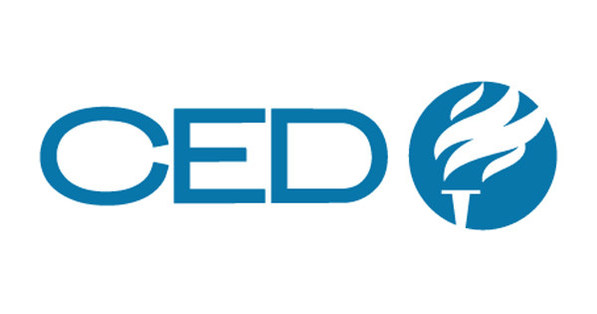Infra
CED Provides Plan to Strengthen US Infrastructure & Manufacturing Capabilities

NEW YORK, Oct. 22, 2024 /PRNewswire/ — The Committee for Economic Development (CED), the public policy center of The Conference Board, has issued a new Solutions Brief, Strategic Investment in Infrastructure: Priorities for Implementation. It offers a three-year progress report on the $1.2 trillion Infrastructure Investment and Jobs Act, as well as the CHIPS and Science Act of 2022.
The Solutions Brief—the latest in CED’s Sustaining Capitalism series—comes as many sectors struggle to use these funds quickly and effectively. From permitting challenges to labor shortages, many projects face obstacles to successful implementation. What’s more, many projects risk running out of funding before being completed, especially as they take longer and cost more than anticipated.
As the Solutions Brief emphasizes, public-private collaboration is needed to execute planned projects successfully through cost-benefit analysis and the use of best practices. Federal and state regulators should develop practical plans to work together effectively, speeding implementation.
In addition, a plan for long-term, strategic investment is essential for maintaining progress in these areas once federal assistance is exhausted. State and local governments, as well as companies, should act now to establish long-term business models for currently subsidized projects.
“This historic federal investment in the nation’s infrastructure and manufacturing capabilities provides a once-in-a-generation opportunity to lay the foundation for a strong 21st century economy,” said David Young, President of CED. “Ensuring that these funds meet their goals will require remarkable coordination and collaboration across the public and private sectors.”
Key Recommendations
State and local governments will need to deliver the most cost-effective projects, procure the materials and labor needed for project delivery, mitigate supply chain risks, and identify areas for public-private collaboration. CED’s recommendations include:
Increase collaboration with state and local governments, and the private sector
- Pursue new federal contracting approaches, applying rigorous cost-benefit analysis. To assist state and local leadership in expediting funding, convene local stakeholders with technical expertise from federal agencies.
- Pursue public-private partnerships where appropriate, including collaborative contracting methods to leverage private-sector enterprise, deliver projects for the lowest cost, and leverage available funding.
- Clearly designate project owners to promote quality delivery by the accountable agency or other body.
- Encourage strategic, long-term investment by both the public and private sectors to ensure that funding continues after IIJA and CHIPS funding is exhausted.
- The federal government should consolidate competitive grant applications where possible, focusing on increased accessibility for small businesses.
- Congress should allocate funding to revive the Affordable Connectivity Program (ACP) to ensure the over 23 million low-income households once enrolled in the program still enjoy broadband service.
Address regulatory paralysis through modernization and streamlining
- Streamline the regulatory approval process to prevent construction and grid connectivity delays and consider giving states—rather than localities—authority to approve large renewable energy projects.
- Improve coordination between the federal government, states, and localities to speed project delivery, and where appropriate, grant greater decision-making authority to states.
- Agencies should invest in hiring and retention of staff skilled in National Environmental Policy Act (NEPA) compliance to improve the efficiency of the NEPA process.
Address cost and supply chain issues
- The Administration should continue to allow agencies to waive the “Buy American” provisions for construction inputs that may be delayed by these provisions. If imports are used because of concerns over price, their use should align with trade agreements and policy.
- Particularly in the event of shortages, Federal trade negotiators should work with trading partners to reach agreements that allow the US to reduce tariffs on key construction inputs.
- Public and private leaders at all levels should work together to determine how best to direct infrastructure funding towards improving supply chains.
- Project designers should coordinate between different types of infrastructure projects in the same location, taking advantage of synergies and addressing potential conflicts early.
Boost transparency for all stakeholders
- The federal government should continue to educate state and local agencies on federal transparency and reporting requirements.
- States should invest infrastructure funds while offering transparency in how federal funding is being used. Similarly, the federal government should continue to update the Build.gov and Invest.gov sites with timeline information on where and how money is being spent.
- Funding opportunities should be widely publicized, along with guidance on the application process, to raise awareness for small businesses of available opportunities.
Build out the workforce
- Stakeholders should collaborate to train the workforce for these projects, including through registered apprenticeships. State and local governments should use funding that offers support for these efforts.
- To train a workforce skilled in semiconductor production, the public and private sector should collaborate on the recruitment of young people into this field as well as the reskilling of the current workforce, to fill high-demand jobs at all levels, from manufacturing to engineering.
- In establishing training programs, local workforce needs must be taken into close consideration, especially for roles requiring two-year degrees and certification programs.
- Identify and recognize occupational licenses across state lines in reciprocity agreements for key construction and civil engineering occupations where location has little impact on job substance.
- Congress should enact immigration reform to boost the workforce in skilled trades, construction, and engineering.
About The Conference Board
The Conference Board is the member-driven think tank that delivers Trusted Insights for What’s Ahead.™ Founded in 1916, we are a non-partisan, not-for-profit entity holding 501(c)(3) tax-exempt status in the United States. ConferenceBoard.org
The Committee for Economic Development (CED) is the public policy center of The Conference Board. The nonprofit, nonpartisan, business-led organization delivers well-researched analysis and reasoned solutions in the nation’s interest. CED Trustees are chief executive officers and key executives of leading US companies who bring their unique experience to address today’s pressing policy issues. Collectively, they represent 30+ industries and over 4 million employees. ConferenceBoard.org/us/Committee-Economic-Development
SOURCE Committee for Economic Development of The Conference Board (CED)
WANT YOUR COMPANY’S NEWS FEATURED ON PRNEWSWIRE.COM?
440k+
Newsrooms &
Influencers
9k+
Digital Media
Outlets
270k+
Journalists
Opted In









